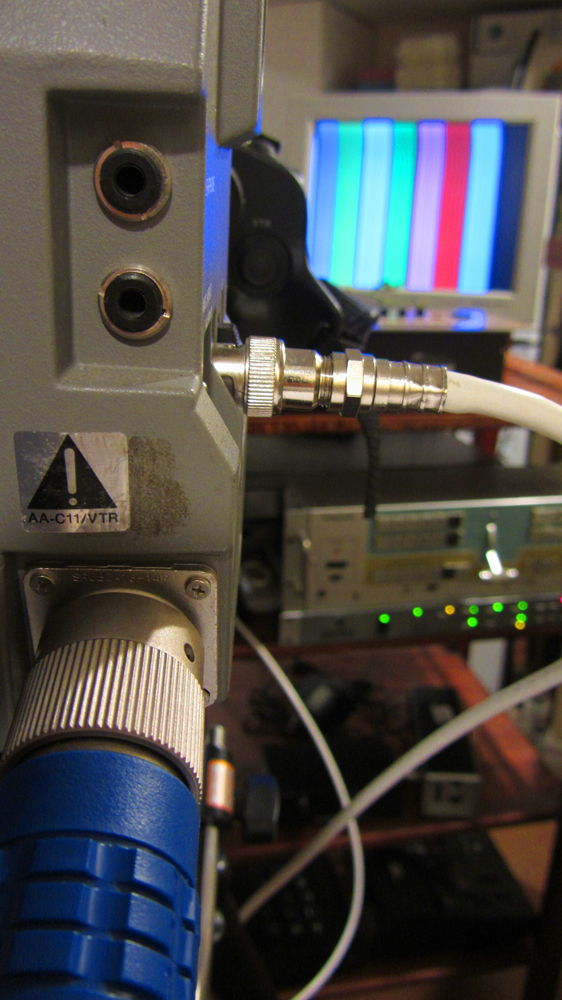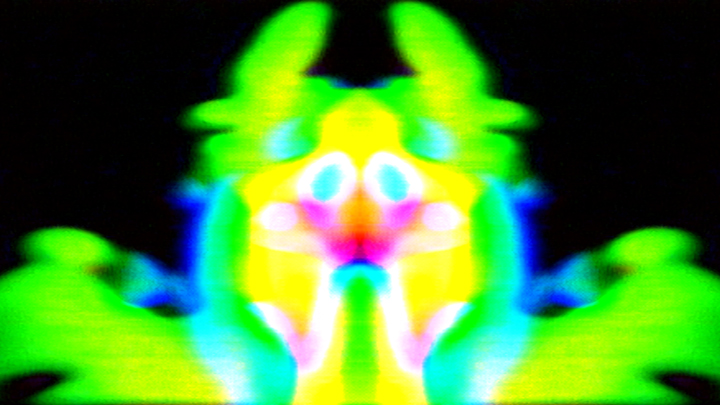Video Feedback 01: Ceiri Torjussen’s Test (2014)
Because the background material I designed for the latest KQEK.com podcast (note YouTube link above) is comprised of video feedback, it make sense to start a new category of visual material, since the three components that accompany the three cue extracts from Ceiri Torjussen’s soundtrack to Test (2014) are neither montages assembled from filmed footage, nor animation per say; I think layered and timed dissolves don’t fully qualify as animation unless there’s a measure of deliberately arranged step-by-step motion, and a more complex use of filters and effects.
At least that’s the criteria I’m sticking with for now.
The dramatic story in Test is set in 1985, and since the music is meant to evoke the period and fit snugly between British synth pop songs of the era, I felt I could have fun with some video feedback – it’s been a while since I last looped material through a mixer, and tweaked the signal with knobs and boxy gear.
This blog is the first of two dealing with the feedback within my Torjussen podcast, and it’s a bit of a basic preamble before the more precise details are recounted in Part 2.
In terms of the chosen approach for the feedback segments, I tried to avoid applying a wealth of digital effects because I thought I’d try for something a bit more pure in design, and try and keep the final material as close to the raw footage as possible. For reasons to be detailed in Part 2, I had to clean things up a little (mostly by adjusting Brightness / Contrast settings, and playing with separate gain settings for the footage’s RGB components), but the end results aren’t that far from the originals.
In brief, I trained a JVC BY-110U 3-tube Saticon video camera from 1986 to an LCD monitor, and split the time base corrected signal to two outputs which ultimately went into a JVC KM-1200U broadcast video mixer.



Input 1 was the camera feed; Input 2 was the same feed pre-routed into a Showtime Video Ventures [SVV] switcher box where I could send the camera’s footage into a SVV colour corrector box and / or a SVV image enhancer to add grain and grime.



The mixer’s T-bar was used to adjust how much of Input 2 was mixed with Input 1, and that signal was sent to a Panasonic AG-7400 S-VHS recorder where it was recorded onto videotape. That footage was dumped into Adobe Premiere CS5 on the hard drive using a Laird LTM-5500 Blue Flame analogue-to-DV converter.

I usually use a Sony GV-D1000 miniDV recorder as a pass-thru, but thought I’d try the Laird this time, since it’s supposed to be a good broadcast quality analogue-to-digital converter. There was an interesting problem that’ll also be addressed in Part 2.
That’s the basic routing design, but in terms of getting the visuals, it was a combination of working knobs, levers, setting the camera up rather weirdly, and using a few ‘tools’ to ‘shape’ the globs of light which the camera re-photographed on the monitor.

I say ‘shape’ because as I discovered on a few prior occasions, once you’ve created globs of light, they take on a life of their own, and they can be manipulated, cajoled, cuddled, bumped, bisected, and brought to the bring of a massive colour explosion or near-death fadeout with objects or your hands – and what is created can be further manipulated into elaborate patterns that flow from one ephemeral design to another.
I know from one interesting test that I can create a long piece which may involve manipulating raw feedback footage, but it’s one take; one life that starts, flows, ebbs, excites to screen-filling weirdness, and then dies when, like a candle, you snuff it out with a lever or the palm of your hand.
For the Ceiri Torjussen podcast, while I did combine some elements in the Intro, Midsection, and Outro cues, the purpose was still to remain close to a full take of one feedback ‘movement,’ although the Midsection is the only one that’s composed of several takes in which stitched variations flow into a full transformation from blob to pulsing proboscis, travelling waves, and pulsing vessels with a morphing vessel that throb, extrude colours, and pull outward to lava-like globs before fading out.
Like these:







And then, of course, there’s something saved for a future piece in which every frame yields a different pattern:

In Part 2, I’ll have links to the HD versions of the feedback segments, plus a short video that shows some behind-the-scenes footage, plus comparisons of the raw and final footage used in the podcast.
Cheers,
Mark R. Hasan, Editor
Big Head Amusements
